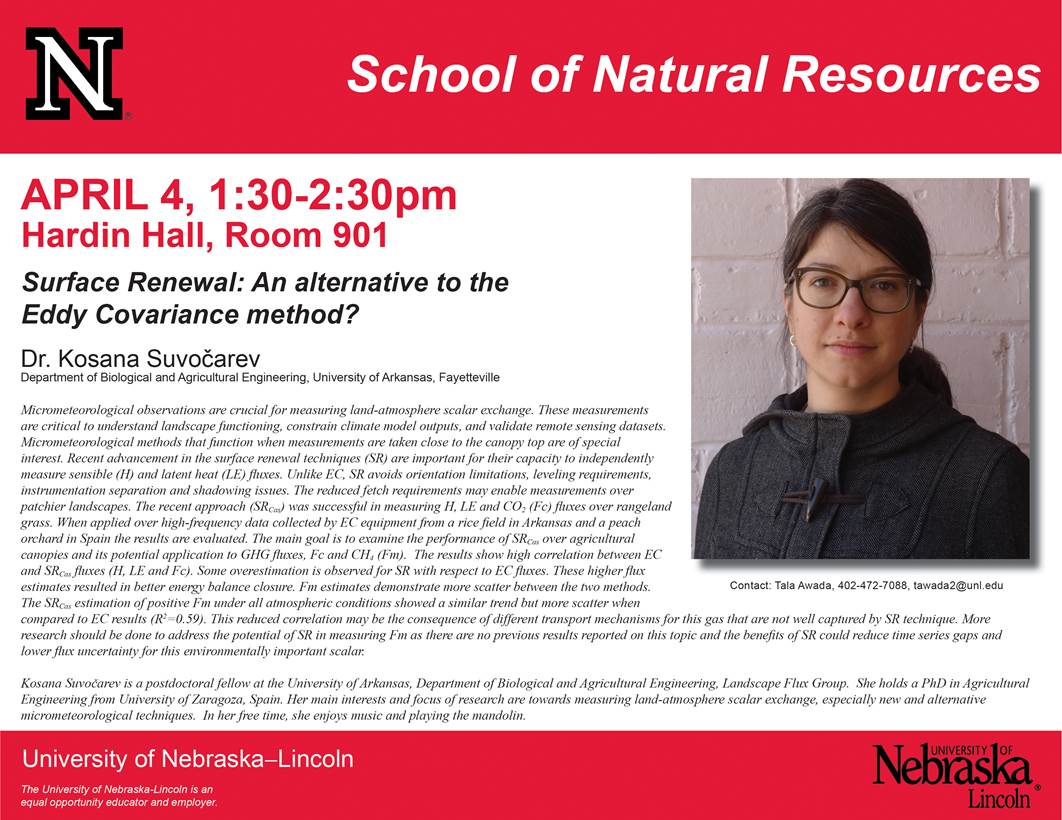
Dr. Kosana Suvocarev, doctoral fellow at the University of Arkansas, has focused her research on measuring land-atmosphere scalar exchange, especially new and alternative micrometeorological techniques. Suvocarev will presents her work from 1:30 to 2:30 p.m. Monday, April 4, at Hardin Hall, Room 901.
Micrometeorological observations are crucial for measuring land-atmosphere scalar exchange. These measurements are critical to understand landscape functioning, constrain climate model outputs, and validate remote sensing datasets. Micrometeorological methods that function when measurements are taken close to the canopy top are of special interest.
Recent advancement in the surface renewal techniques (SR) are important for their capacity to independently measure sensible (H) and latent heat (LE) fluxes. Unlike EC, SR avoids orientation limitations, leveling requirements, instrumentation separation and shadowing issues. The reduced fetch requirements may enable measurements over patchier landscapes. The recent approach (SRCas) was successful in measuring H, LE and CO2 (Fc) fluxes over rangeland grass. When applied over high-frequency data collected by EC equipment from a rice field in Arkansas and a peach orchard in Spain the results are evaluated. The main goal is to examine the performance of SRCas over agricultural canopies and its potential application to GHG fluxes, Fc and CH4 (Fm).
The results show high correlation between EC and SRCas fluxes (H, LE and Fc). Some overestimation is observed for SR with respect to EC fluxes. These higher flux estimates resulted in better energy balance closure. Fm estimates demonstrate more scatter between the two methods. The SRCas estimation of positive Fm under all atmospheric conditions showed a similar trend but more scatter when compared to EC results (R2=0.59). This reduced correlation may be the consequence of different transport mechanisms for this gas that are not well captured by SR technique. More research should be done to address the potential of SR in measuring Fm as there are no previous results reported on this topic, and the benefits of SR could reduce time series gaps and lower flux uncertainty for this environmentally important scalar.
More details at: snr.unl.edu